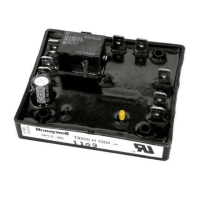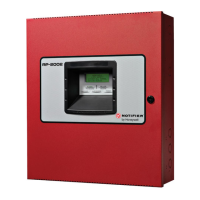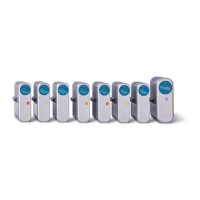4. D. (1) (d) Phase of Flight Logic
~ The Climb Phase
While on the ground,
the power-up flight phase is set to
climb, by default. Level-offs, while
in climb, do not
change the flight phase.
(See Figure 270.1).
If a descent is started prior to reaching the computed
top-of-climb (TOC) altitude, the flight phase changes to
descent.
The flight phase does not change back to climb
until climb is resumed (see Figure 270.2).
The normal way to transition from the climb to the cruise
phase is to reach the TOC altitude. There is one exception
to this rule; 30 NM prior to top-of-descent
(TOD) the TOC
altitude will come down to the present altitude if the
vertical mode is altitude hold (see Figure 270.3). This
causes the flight phase to change to cruise.
~ The Cruise Phase
When cruise altitude is reached, the flight phase stays in
cruise until another climb, or the descent is started. A
climb or descent is recognized by an ASEL ARM towards a new
preselected altitude.
If
a climb is initiated, a newTOC
altitude is placed at the preselector, but if a descent is
started the cruise altitude does not change.
There are two sub-phases to the cruise phase called
cruise-climb and cruise-descent. These sub-phases are
defined as climbs or descents less than 6,500 feet (see
Figure 270.4).
Note that when a cruise-descent takes place
the cruise altitude is moved down.
Also, a cruise-descent
is only allowed above 15,000 ft.
Descents within 100 NM of the planned TOD
are always treated
as a descent, regardless of the altitude change (see Figure
270.5) .
TOC
CLIMB
AD-31723@
Climb Phase With No Descents
Figure 270.1
22-14-00
Page 298.214
Apr 15/93
Useor disclosure of information on this page issubject to the restrictions on the title page of this document.

